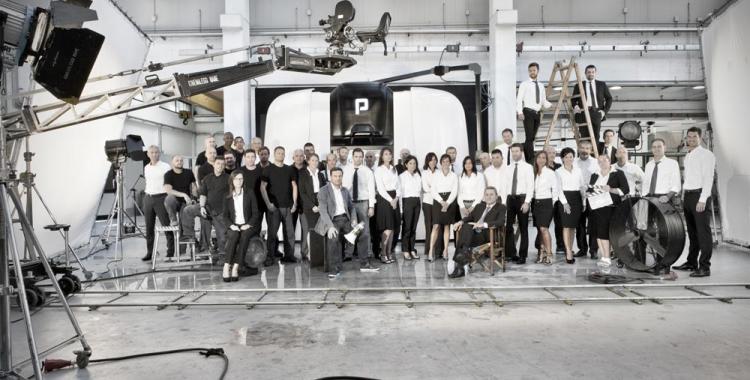Download Area
Specifications
The structure of the PORTACENTER (BOX base) does not consist of various elements, but a single element to assure greater stiffness.
The 3 work modules are flanged to the walls and the structure is CLOSED and not OPEN, unlike the machining centres available on the market.
Our approach is to work a single piece per pallet to optimise stiffness as much as possible, unlike multi-supporting equipment that, due to physics, are inevitably subject to more vibrations as their height increases.
Another great technical advantage is the fact that, thanks to the single piece to be machined, you are no longer obliged to compromise on tools, where often with machining centres you need to stretch out to reach the tool-holder to get the piece you need to work on and avoid a collision.
Thanks to the completely different approach to the single piece, all tool-holders have a very compact design resulting in enhanced stiffness, hence the removal of more material and longer service life of the tool.
The PORTACENTER has been designed to eliminate ALL the compromises you need to make in terms of equipment and tools, which instead a machining centre forces you to make if you want to try and gain a bit more PRODUCTIVITY. The PORTACENTER is suitable to machine pieces in a wide variety of materials, starting from alloys up to stainless steel.
DOWNLOAD
History of machine tools
Around the 1960s-70s, the machine tool market was clearly split between those who used Machining Centers and those who used Transfer machines. However, over the years users of both these types of machine tools had to face the respective issues:
- poor flexibility for Transfer machine users
- low productivity for Machining Centers users
The onset of Lean Manufacturing brought manufacturers closer to the concept of striking the right balance between flexibility and productivity, where the market challenge is staying productive, but without unnecessary stocks, which are expensive for the company.
Machining Center users sought to solve the issue by buying many of them and creating the “Machining Centers array” effect, a business model that is now no longer sustainable as it involves a staggering increase in fixed production costs, leading to a deadlock.
In their turn, Transfer machine users sought to solve the issue by developing “Flexible Transfer” models, machine tools that are starting to alert the market to the need for greater flexibility, which however, Transfer machines cannot guarantee or achieve.
Then, these 2 market drawbacks and this massive need led to the development of the PORTACENTER, the first 3-spindle Machining Center, built in series.
The ideal machine tool to implement and apply the Porta Production Method, based on lean manufacturing concepts and adapted to the world of machine tool users.
DOWNLOAD
GENERAL SUPPLY CHAIN
If you are a supplier, download the document with all the information on the general supply conditions.
DOWNLOAD
COMPANY VISION & MISSION
At PORTA SOLUTIONS, we design and build 3-spindle machining centers used in various sectors of industrial production while also providing technical consulting and assistance.
In order to ensure our customers’ satisfaction, our work reflects several fundamental values.
DOWNLOAD
Porta Solutions S.p.A.
Via San Lorenzo, 39
25069 Villa Carcina (Bs)
Tel. +39 030/8172200
E-mail: info@porta-solutions.com
Via San Lorenzo, 39
25069 Villa Carcina (Bs)
Tel. +39 030/8172200
E-mail: info@porta-solutions.com
P.Iva 01966300988

Credits TITANKA! Spa















 PORTA PLANET
PORTA PLANET

